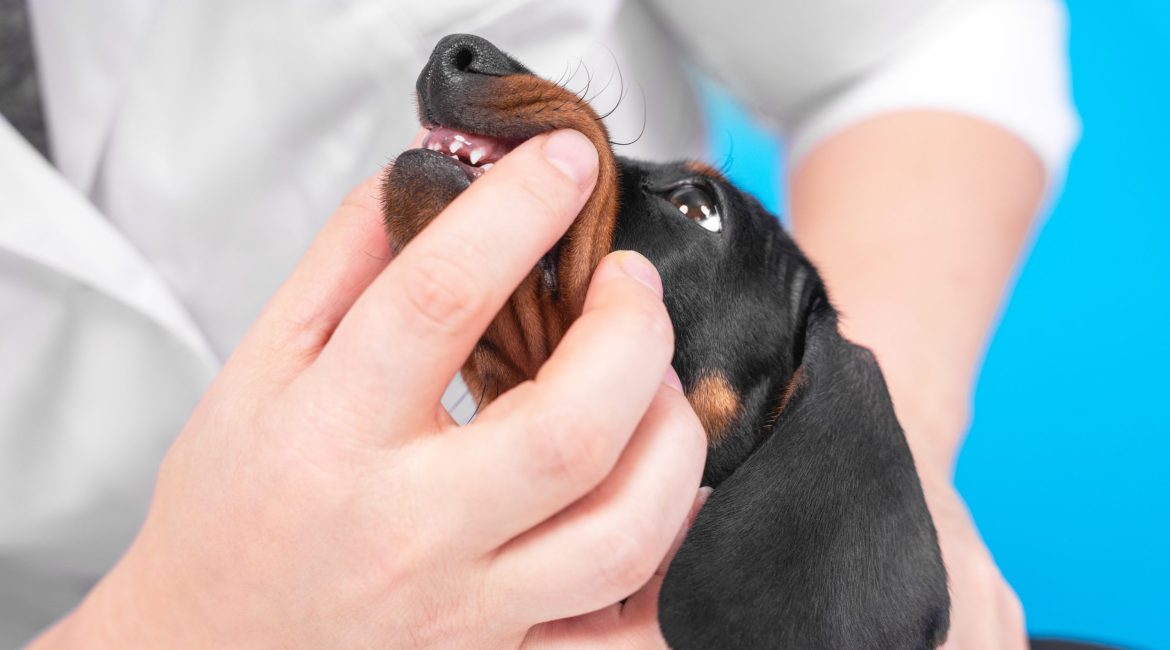Rover’s behaviour has been slightly off lately and his doggie smile is looking unusually pale, and you’re not sure what this could mean? Oneplan is here to help; here’s all you need to know about pale gums in dogs!
As a responsible paw parent, you will already know that you need to closely track your furry friend’s health and behaviour so that you can tell if something isn’t right with your pet. One way to monitor your dog’s overall health is by taking a look inside their mouth!
Checking your dog’s gums should be on your monthly to-do list as your pup’s gums can give you all the vital information you need about your dog’s health. As uncomfortable as it may be for you and Spot, it is essential to keep an eye on the colour of your pet’s gums because any colour changes are a tell-tale sign that something is wrong and you should be heading to the vet.
Any colour change in your dog’s gums should be noted, however, pale gums should lead to an immediate call to the vet.
Discover: What Every Pet Owner Should Know about Parvo Disease
What do normal, healthy doggie gums look like?
First things first, you will need to know the normal colour of your puppy’s gums. Normal, healthy gums should be bubble gum pink and should be slippery, wet, and smooth.
When you press softly onto the gums, the gums should turn light pink or white and quickly return to the normal salmon pink colour when you lift your finger. If the gums return to their usual colour in a matter of seconds, this shows your pup is healthy and well-hydrated.
You might notice that your puppy’s gums are black, and this is perfectly normal. This is caused by natural pigmentation and is absolutely nothing to worry about. Simply look for lighter spots on the gum, or underneath your pooch’s tongue to find a pink, non-pigmented section to check if your dog’s gums are the healthy, salmon pink colour they should be.
Related: 5 Things Pet Insurance Can Teach You About Pet Dental Care
Your routine doggie gum check shows that your pooch has pale gums, what does this mean?
Pale pooch gums are indicative that your pup has an underlying health issue. Pale gums can be caused by several different health problems and usually, they are all serious issues that require medical attention. A few reasons for pale gums in doggos are:
Anaemia
Anaemia is caused by your pet’s body not producing enough red blood cells or haemoglobin to circulate throughout the body. Anaemia is not an illness of its own, but rather a symptom of an underlying illness, such as an infectious disease, internal bleeding, parasitic infections, cancer, and many more.
Anaemia is usually paired with other symptoms such as weakness, fatigue, fast pulse, rapid breathing, and weight loss. In this case, shock doesn’t refer to the feeling of surprise, but rather to a life-threatening condition that is caused by a sudden drop in blood flow. This means that your dog’s organs do not have sufficient oxygen and nutrients to function properly.
Shock can be caused by several different events, such asaccidents, trauma, allergic reactions, severe infection, poisoning, and blood loss. It is essential to treat shock as soon as possible, as this can be a fatal illness.
Blood Loss
Pale gums can be a direct result of blood loss, both internal and external. Bleeding causes a reduction in blood circulation, which causes pale gums. Blood loss can be caused by many events, including trauma or severe parasite infestation. Blood loss is usually combined with other symptoms, such as visible blood, weakness, trouble breathing, and cool body temperature.
Kidney Disease
One of the kidney’s functions is to make a hormone called erythropoietin, which instructs the bone marrow to produce red blood cells. If the kidneys are not functioning properly, they will not sufficiently produce this hormone which will result in a reduction in red blood cells, which causes your pup to have pale gums. Other signs of kidney disease include excessive drinking, increased urination, reduced appetite, weight loss, and vomiting.
Treating pale gums in dogs
As soon as you notice that your furry friend has pale gums, it is advised that you immediately contact your local vet and follow their advice on what to do next, as all the above health issues are very serious and require medical intervention.
We know that the above can be scary to read, especially if you have seen these symptoms in your four-legged friend. However, if you catch these illnesses early enough, there is a high chance that your pup can be treated and back to their usual self in no time!
Now to deal with the financial side of veterinarian visits!
If you notice that your puppy’s gums have changed in colour or texture, you will need to make a stop at your local vet to ensure your dog is well taken care of. Taking your precious pooch to the vet may be daunting; the news the visit may bring, as well as the hefty bill that usually accompanies the news.
That’s why you should join Oneplan Pet Insurance and put your mind (and wallet) at ease! Covering your furry friend with pet insurance is essential to ensure you can afford to give your pet the necessary medical care. Oneplan offers quality pet insurance with extensive benefits, instantly processes claims for vet visits and routine care, offers cover for illness and accidents, and offers clients exclusive access and up to 25% discount on all Onepet Premium Pet Store products (bonus!).
If you sign up for the Primary, Classic, or Super Plans, you’ll receive your very own Onecard. This is a card that is instantly loaded with funds for your fur baby’s vet visits or routine care before you go to see the vet, which means the vet bill can be the last thing on your mind.
Joining Oneplan Pet Insurance is a no-brainer! Click here for a quick & easy online quote.
Your Pet Insurance Family,
Oneplan




